How to choose shoes for a child?

Do you want to support your child's development in the best possible way? Do you want to give him a good start in his adult life? Make sure that from an early age he or she moves around in properly fitted shoes. If the footwear will provide proper support for his feet and support their development, your child will avoid many health problems in the future! Check out how to choose shoes for your child.
The choice of footwear on the market is extremely wide. Brands outdo each other with ideas for new and better shoes for kids, in which they will be able to play, overcome obstacles and achieve goals without any problems or discomfort. However, not every shoe will work for your child. Shoes need to be individually selected to fulfill their function.
How to choose shoes for a young child who is learning to walk?
Toddlers who are just taking their first steps do not need shoes. At this stage, toddlers should walk barefoot as much as possible. This will help them learn how to properly roll their feet on the ground, how to place them firmly on the ground so they don't hurt, and how to work their toes to keep their balance. Moving barefoot also stimulates their touch receptors and thus their nervous system - touching different textures with their feet is a great experience to get the brain active!
However, walking barefoot is not always possible. In order for toddlers to practice taking their first steps in the garden, park or snow, they need the right shoes. If you want to choose the right shoes for children who are learning to walk, pay attention to whether:
- has a flexible, elastic sole that works naturally with your feet,
- Is made of soft materials that do not irritate the skin,
- does not fall off the feet, even when climbing on the toes,
- It has a wide tip so that the fingers can work and provide adequate support for toddlers.
A good example of shoes that are suitable for children learning to walk are the products offered by the EkoTuptusie brand. The shoes are made of 100% natural leather, have a suede sole with rubber patches, and are lightweight, so toddlers don't have to put strength into lifting their legs to take the next step.
What shoes to choose for preschool and older children?
Children of preschool and school age are extremely active, often running, jumping, climbing trees, riding bikes and playing various sports. For them, it is necessary to choose shoes that will "keep up" with them in any situation, on top of which they will be durable and resistant to various weather conditions, so that they can serve for a whole season without any complaints. Footwear that will work best:
- is made of natural materials, such as leather - the soft material prevents the skin from rubbing, so there is no risk of kids coming home with painful wounds,
- has a non-slip and flexible sole - in such shoes children can move freely on any surface, and can roll their feet on the ground in a natural way,
- easy to assume - preschoolers and schoolchildren love to be independent. This is their way of showing what kind of "adults" they are and gaining some confidence. To make it easier for them, make sure the shoes are easy to put on and take off. This is important especially with winter footwear,
- has a leather profiled insole - foot defects affect the functioning of the entire skeletal system. So that children do not have to struggle, for example, with the consequences of flat feet or valgus knees in the future, choose shoes that have a properly profiled insole. This will ensure that the footwear will provide the right conditions for young feet to develop at all times.
If you are looking for good shoes for a preschooler or schoolboy, choose a model from a proven brand, such as Geox, Emel, Mrugala or Primigi. These companies have many years of experience in creating high-quality footwear, so they not only look good despite the passage of time, but also perform well in all conditions. You can find their wide selection in the Tupu Tupu assortment.
How to choose sandals for a child?
In the summer, kids spend from several to even more than a dozen hours a day outside. In order for them to play safely and without any discomfort, it is necessary to provide them with airy, comfortable sandals. Wondering what to follow when selecting them?
- First: pay attention to the material from which they are made. Ideally, they should be made of natural leather or cotton, as these are breathable fabrics that absorb sweat and return it to the outside. As a result, the foot does not sweat and there is no risk of the foot slipping while walking. In addition, these materials are soft to the touch and do not irritate the skin, so there are no painful flare-ups.
- Second: check that the toes of the toddler do not protrude beyond the insole. Good shoes should be about 0.5-0.7 cm longer than the foot, so that it can move freely when walking. The provision in sandals is also important to avoid the risk of damaging the toes, for example, when tripping over a protruding ankle or stone.
- Third: make sure that the sole flexes in different directions. This will allow the foot to work in a natural way, not only when walking, but also when jumping or climbing, for example, in the playground.
When choosing sandals for your child, also pay attention to whether they have a covered nose. Additional protection in this area is important if you are choosing summer footwear for a toddler who is learning to walk. For slightly older children, you can confidently go for open sandals that provide good air circulation.
How to choose shoes for a child for winter?
The selection of winter boots causes the most trouble. Such footwear must not only protect the feet from the cold, but also from wind and water, so that they stay dry all the time they are outside. Therefore, when you choose winter boots for your child, pay attention to whether they have:
- water and windproof membrane - it will prevent the cold from getting in, so it will be easier to keep your feet at the right temperature,
- A wide tongue that prevents snow, mud and water from entering the shoe,
- high upper that stabilizes the entire foot and protects the ankle from sudden injury,
- flexible and non-slip sole, which provides a safe environment for kids to move around even on slippery surfaces, and allows feet to work.
Remember that well-fitting winter shoes are 0.7 - 1 cm longer than children's feet. This allows you to safely slide your socked foot inside and move your toes freely.
In well-chosen shoes your child will develop the correct habit of rolling the foot on the ground, which will prevent postural defects in the future. Quality footwear is an investment in your toddler's health, so it's not worth saving on it!
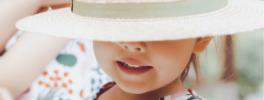
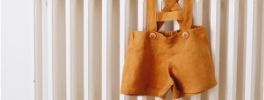
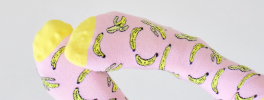
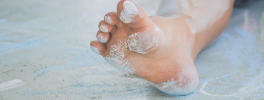
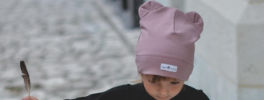
 Cookies
Cookies
comments (0)